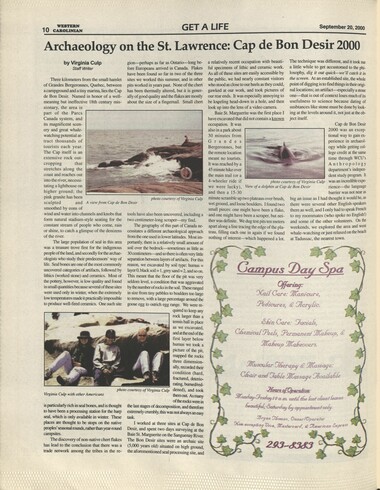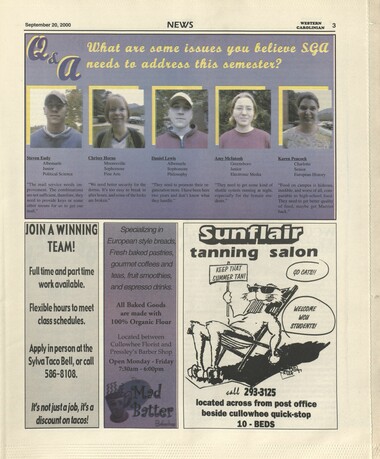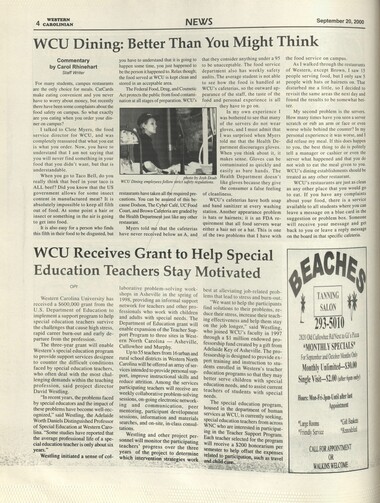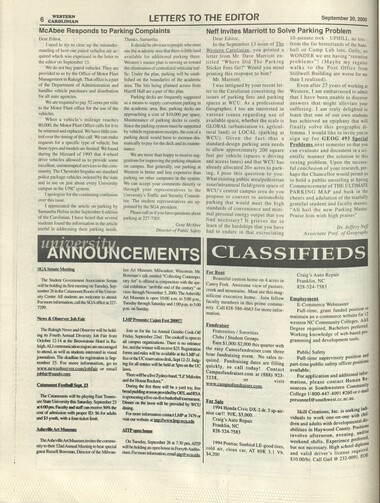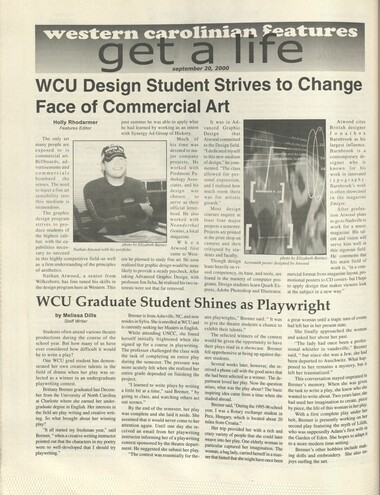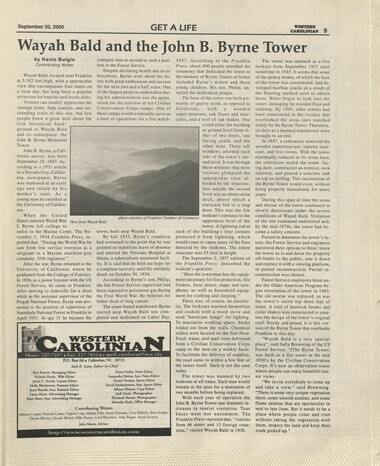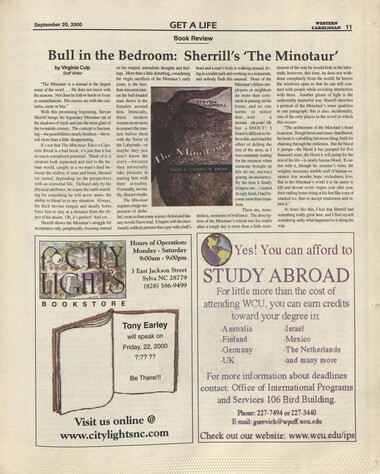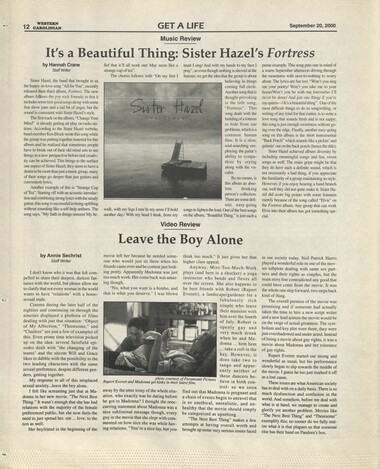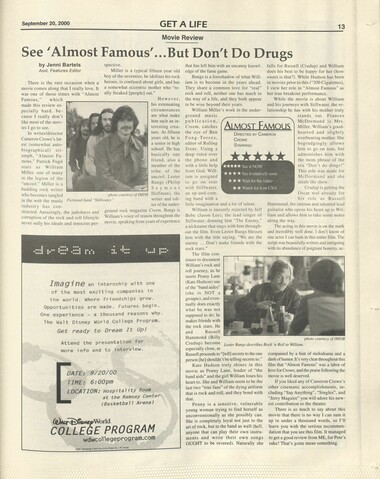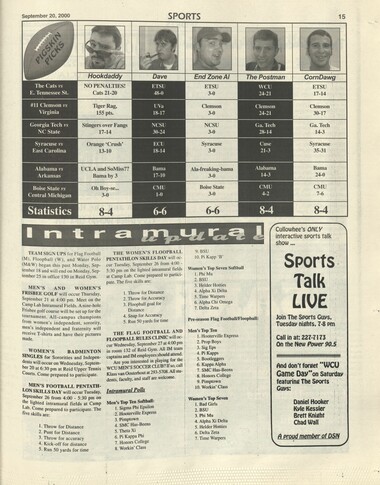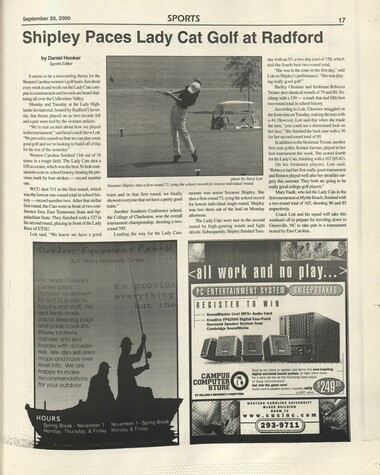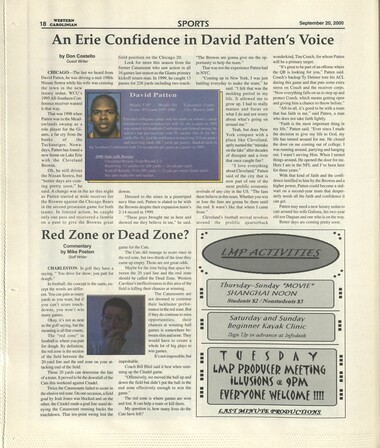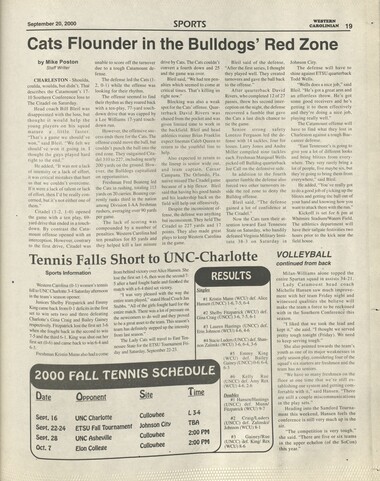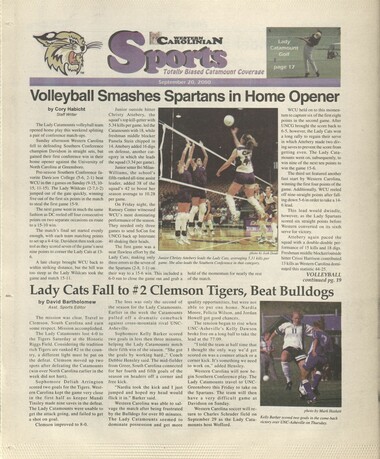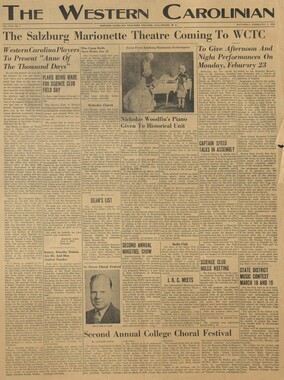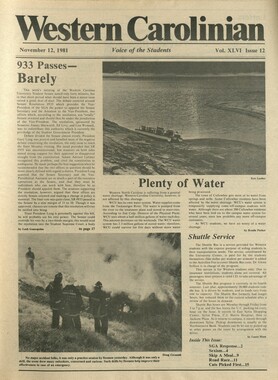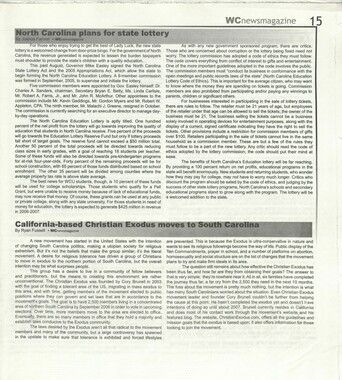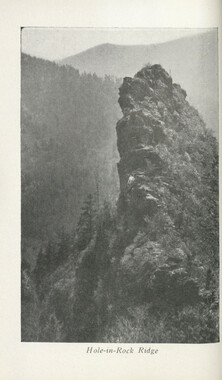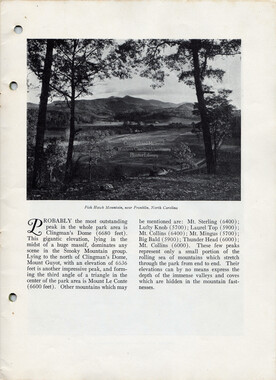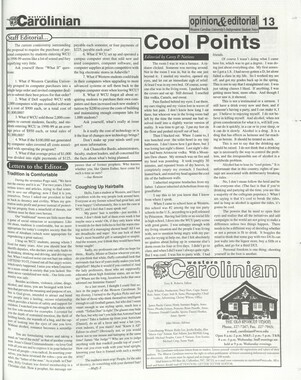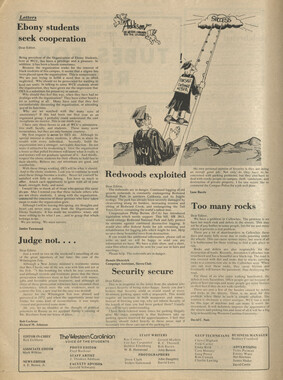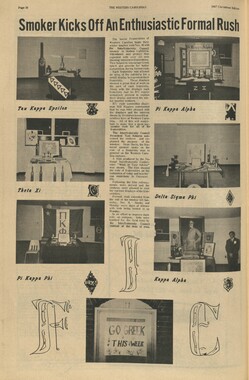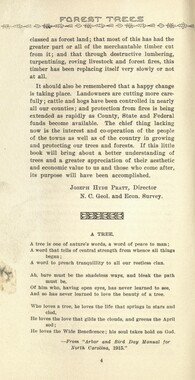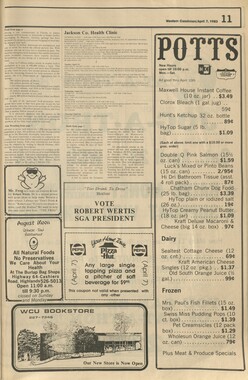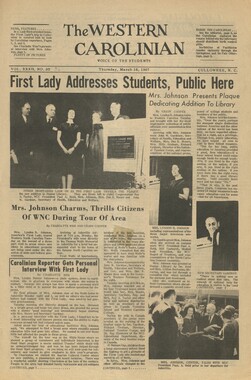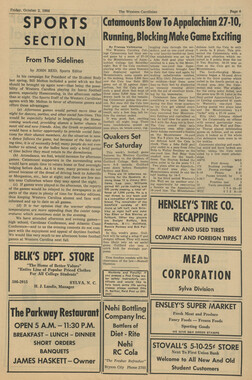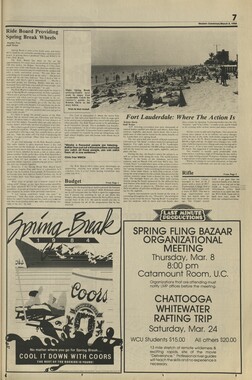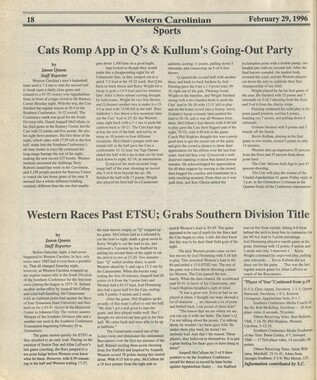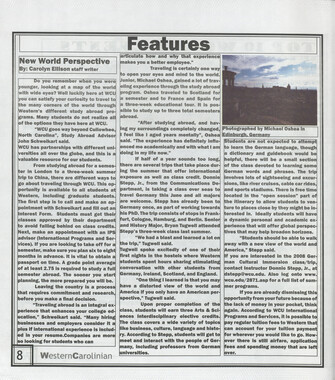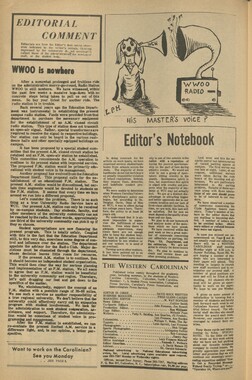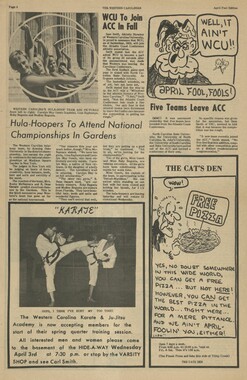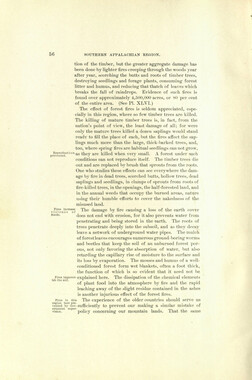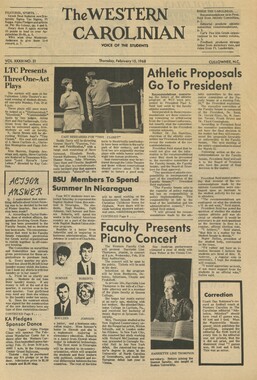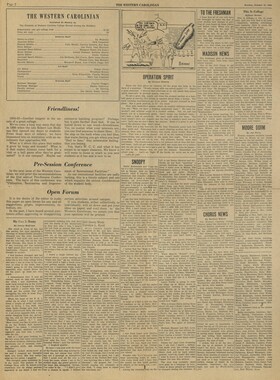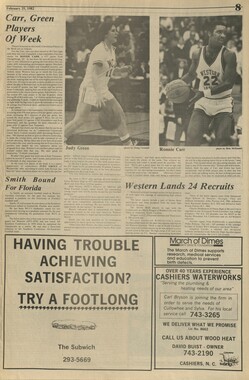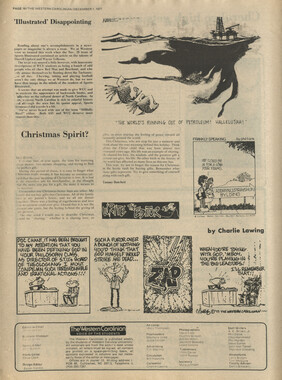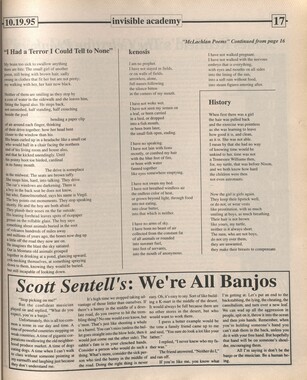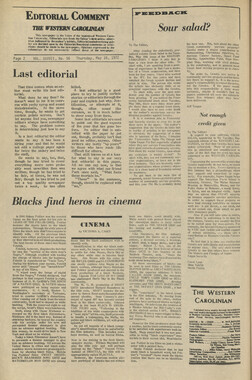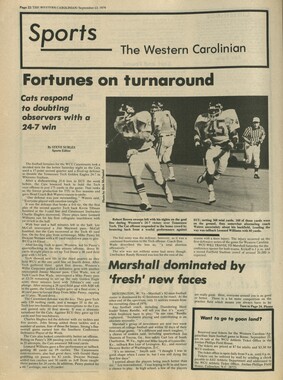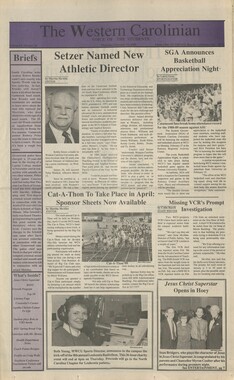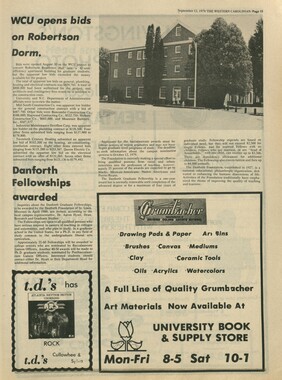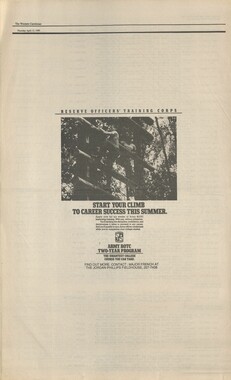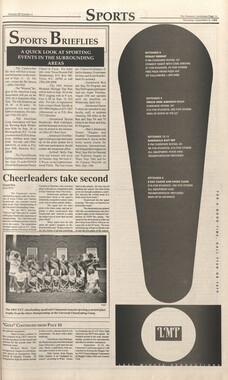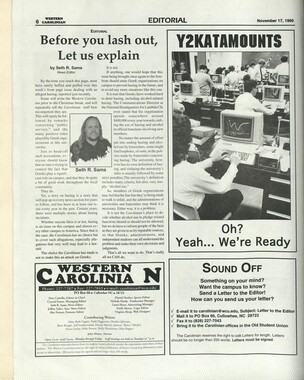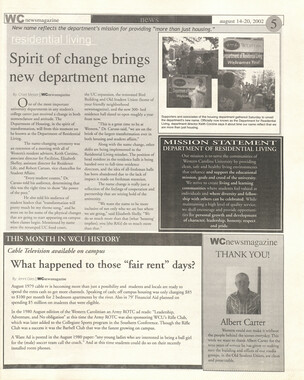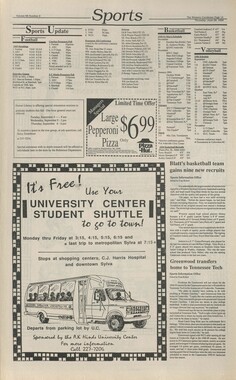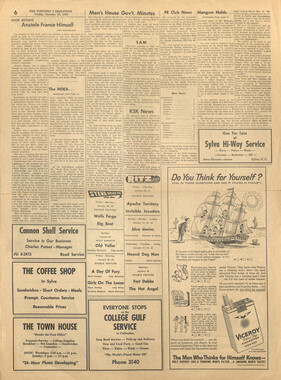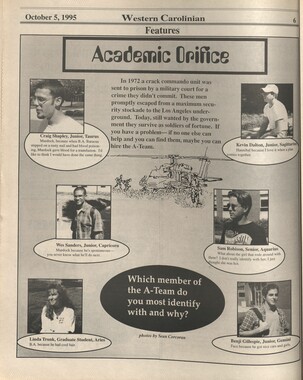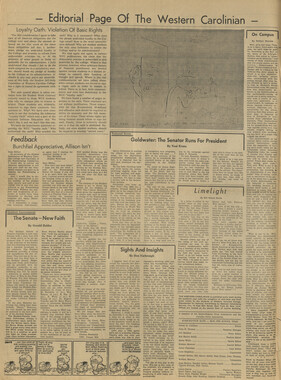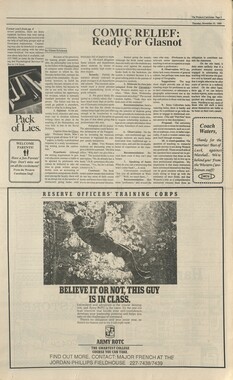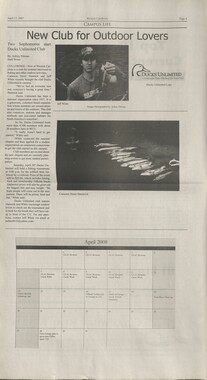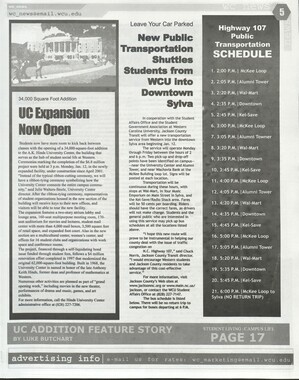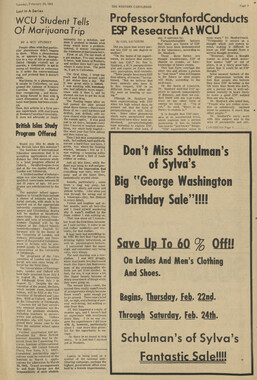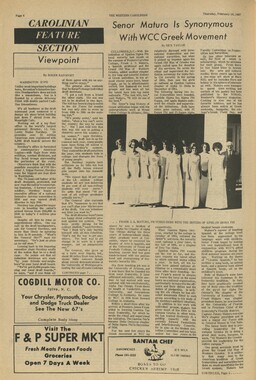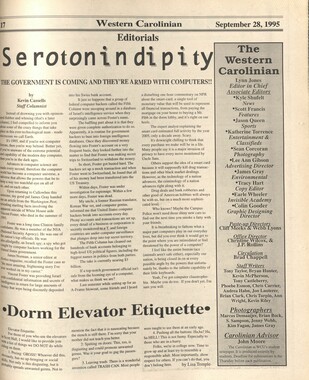Western Carolina University (21)
View all
- Canton Champion Fibre Company (2308)
- Cherokee Traditions (291)
- Civil War in Southern Appalachia (165)
- Craft Revival (1942)
- George Masa Collection (137)
- Great Smoky Mountains - A Park for America (3080)
- Highlights from Western Carolina University (422)
- Horace Kephart (973)
- Journeys Through Jackson (159)
- LGBTQIA+ Archive of Jackson County (89)
- Oral Histories of Western North Carolina (318)
- Picturing Appalachia (6617)
- Stories of Mountain Folk (413)
- Travel Western North Carolina (153)
- Western Carolina University Fine Art Museum Vitreograph Collection (129)
- Western Carolina University Herbarium (92)
- Western Carolina University: Making Memories (738)
- Western Carolina University Publications (2491)
- Western Carolina University Restricted Electronic Theses and Dissertations (146)
- Western North Carolina Regional Maps (71)
- World War II in Southern Appalachia (131)
University of North Carolina Asheville (6)
View all
- Allanstand Cottage Industries (62)
- Appalachian National Park Association (53)
- Bennett, Kelly, 1890-1974 (1463)
- Berry, Walter (76)
- Brasstown Carvers (40)
- Carver, George Washington, 1864?-1943 (26)
- Cathey, Joseph, 1803-1874 (1)
- Champion Fibre Company (233)
- Champion Paper and Fibre Company (297)
- Cherokee Indian Fair Association (16)
- Cherokee Language Program (22)
- Crowe, Amanda (40)
- Edmonston, Thomas Benton, 1842-1907 (7)
- Ensley, A. L. (Abraham Lincoln), 1865-1948 (275)
- Fromer, Irving Rhodes, 1913-1994 (70)
- George Butz (BFS 1907) (46)
- Goodrich, Frances Louisa (120)
- Grant, George Alexander, 1891-1964 (96)
- Heard, Marian Gladys (60)
- Kephart, Calvin, 1883-1969 (15)
- Kephart, Horace, 1862-1931 (313)
- Kephart, Laura, 1862-1954 (67)
- Laney, Gideon Thomas, 1889-1976 (439)
- Masa, George, 1881-1933 (61)
- McElhinney, William Julian, 1896-1953 (44)
- Niggli, Josephina, 1910-1983 (10)
- North Carolina Park Commission (105)
- Osborne, Kezia Stradley (9)
- Owens, Samuel Robert, 1918-1995 (11)
- Penland Weavers and Potters (36)
- Roberts, Vivienne (15)
- Roth, Albert, 1890-1974 (142)
- Schenck, Carl Alwin, 1868-1955 (1)
- Sherrill's Photography Studio (2565)
- Southern Highland Handicraft Guild (127)
- Southern Highlanders, Inc. (71)
- Stalcup, Jesse Bryson (46)
- Stearns, I. K. (213)
- Thompson, James Edward, 1880-1976 (226)
- United States. Indian Arts and Crafts Board (130)
- USFS (683)
- Vance, Zebulon Baird, 1830-1894 (1)
- Weaver, Zebulon, 1872-1948 (58)
- Western Carolina College (230)
- Western Carolina Teachers College (282)
- Western Carolina University (2008)
- Western Carolina University. Mountain Heritage Center (18)
- Whitman, Walt, 1819-1892 (10)
- Wilburn, Hiram Coleman, 1880-1967 (73)
- Williams, Isadora (3)
- Cain, Doreyl Ammons (0)
- Crittenden, Lorraine (0)
- Rhodes, Judy (0)
- Smith, Edward Clark (0)
- Appalachian Region, Southern (3032)
- Asheville (N.C.) (1945)
- Avery County (N.C.) (26)
- Blount County (Tenn.) (195)
- Buncombe County (N.C.) (1680)
- Cherokee County (N.C.) (283)
- Clay County (N.C.) (556)
- Graham County (N.C.) (238)
- Great Smoky Mountains National Park (N.C. and Tenn.) (525)
- Haywood County (N.C.) (3573)
- Henderson County (N.C.) (70)
- Jackson County (N.C.) (4925)
- Knox County (Tenn.) (35)
- Knoxville (Tenn.) (13)
- Lake Santeetlah (N.C.) (10)
- Macon County (N.C.) (421)
- Madison County (N.C.) (216)
- McDowell County (N.C.) (39)
- Mitchell County (N.C.) (135)
- Polk County (N.C.) (35)
- Qualla Boundary (982)
- Rutherford County (N.C.) (78)
- Swain County (N.C.) (2185)
- Transylvania County (N.C.) (270)
- Watauga County (N.C.) (12)
- Waynesville (N.C.) (86)
- Yancey County (N.C.) (72)
- Aerial Photographs (3)
- Aerial Views (60)
- Albums (books) (4)
- Articles (1)
- Artifacts (object Genre) (228)
- Bibliographies (1)
- Biography (general Genre) (2)
- Cards (information Artifacts) (38)
- Clippings (information Artifacts) (192)
- Copybooks (instructional Materials) (3)
- Crafts (art Genres) (622)
- Depictions (visual Works) (21)
- Design Drawings (1)
- Digital Moving Image Formats (2)
- Drawings (visual Works) (185)
- Envelopes (101)
- Exhibitions (events) (1)
- Facsimiles (reproductions) (1)
- Fiction (general Genre) (4)
- Financial Records (12)
- Fliers (printed Matter) (67)
- Glass Plate Negatives (381)
- Guidebooks (2)
- Internegatives (10)
- Interviews (823)
- Land Surveys (102)
- Letters (correspondence) (1045)
- Manuscripts (documents) (618)
- Maps (documents) (177)
- Memorandums (25)
- Minutes (administrative Records) (59)
- Negatives (photographs) (6090)
- Newsletters (1290)
- Newspapers (2)
- Notebooks (8)
- Occupation Currency (1)
- Paintings (visual Works) (1)
- Pen And Ink Drawings (1)
- Periodicals (194)
- Personal Narratives (10)
- Photographs (12977)
- Plans (maps) (1)
- Poetry (6)
- Portraits (4568)
- Postcards (329)
- Programs (documents) (181)
- Publications (documents) (2444)
- Questionnaires (65)
- Relief Prints (26)
- Sayings (literary Genre) (1)
- Scrapbooks (282)
- Sheet Music (2)
- Slides (photographs) (402)
- Songs (musical Compositions) (2)
- Sound Recordings (802)
- Specimens (92)
- Speeches (documents) (18)
- Tintypes (photographs) (8)
- Transcripts (329)
- Text Messages (0)
- A.L. Ensley Collection (275)
- Appalachian Industrial School Records (7)
- Appalachian National Park Association Records (336)
- Axley-Meroney Collection (2)
- Bayard Wootten Photograph Collection (20)
- Bethel Rural Community Organization Collection (7)
- Blumer Collection (5)
- C.W. Slagle Collection (20)
- Canton Area Historical Museum (2110)
- Carlos C. Campbell Collection (462)
- Cataloochee History Project (64)
- Cherokee Studies Collection (4)
- Daisy Dame Photograph Album (5)
- Daniel Boone VI Collection (1)
- Doris Ulmann Photograph Collection (112)
- Elizabeth H. Lasley Collection (1)
- Elizabeth Woolworth Szold Fleharty Collection (4)
- Frank Fry Collection (95)
- George Masa Collection (173)
- Gideon Laney Collection (452)
- Hazel Scarborough Collection (2)
- Hiram C. Wilburn Papers (28)
- Historic Photographs Collection (236)
- Horace Kephart Collection (861)
- Humbard Collection (33)
- Hunter and Weaver Families Collection (1)
- I. D. Blumenthal Collection (4)
- Isadora Williams Collection (4)
- Jesse Bryson Stalcup Collection (47)
- Jim Thompson Collection (224)
- John B. Battle Collection (7)
- John C. Campbell Folk School Records (80)
- John Parris Collection (6)
- Judaculla Rock project (2)
- Kelly Bennett Collection (1482)
- Love Family Papers (11)
- Major Wiley Parris Civil War Letters (3)
- Map Collection (12)
- McFee-Misemer Civil War Letters (34)
- Mountain Heritage Center Collection (4)
- Norburn - Robertson - Thomson Families Collection (44)
- Pauline Hood Collection (7)
- Pre-Guild Collection (2)
- Qualla Arts and Crafts Mutual Collection (12)
- R.A. Romanes Collection (681)
- Rosser H. Taylor Collection (1)
- Samuel Robert Owens Collection (94)
- Sara Madison Collection (144)
- Sherrill Studio Photo Collection (2558)
- Smoky Mountains Hiking Club Collection (616)
- Stories of Mountain Folk - Radio Programs (374)
- The Reporter, Western Carolina University (510)
- Venoy and Elizabeth Reed Collection (16)
- WCU Gender and Sexuality Oral History Project (36)
- WCU Mountain Heritage Center Oral Histories (25)
- WCU Oral History Collection - Mountain People, Mountain Lives (71)
- WCU Students Newspapers Collection (1923)
- Western North Carolina Tomorrow Black Oral History Project (69)
- William Williams Stringfield Collection (2)
- Zebulon Weaver Collection (109)
- African Americans (390)
- Appalachian Trail (35)
- Artisans (521)
- Cherokee art (84)
- Cherokee artists -- North Carolina (10)
- Cherokee language (21)
- Cherokee pottery (101)
- Cherokee women (208)
- Church buildings (190)
- Civilian Conservation Corps (U.S.) (111)
- College student newspapers and periodicals (2012)
- Dams (108)
- Dance (1023)
- Education (222)
- Floods (63)
- Folk music (1015)
- Forced removal, 1813-1903 (2)
- Forest conservation (220)
- Forests and forestry (1198)
- Gender nonconformity (4)
- Great Smoky Mountains National Park (N.C. and Tenn.) (181)
- Hunting (47)
- Landscape photography (25)
- Logging (122)
- Maps (83)
- Mines and mineral resources (9)
- North Carolina -- Maps (18)
- Paper industry (38)
- Postcards (255)
- Pottery (135)
- Railroad trains (72)
- Rural electrification -- North Carolina, Western (3)
- School integration -- Southern States (2)
- Segregation -- North Carolina, Western (5)
- Slavery (5)
- Sports (452)
- Storytelling (243)
- Waterfalls -- Great Smoky Mountains (N.C. and Tenn.) (66)
- Weaving -- Appalachian Region, Southern (280)
- Wood-carving -- Appalachian Region, Southern (328)
- World War, 1939-1945 (173)
Western Carolinian Volume 65 (66) Number 05
Item
Item’s are ‘child’ level descriptions to ‘parent’ objects, (e.g. one page of a whole book).
-
-
WESTERN 10 CAROLINIAN GET A LIFE September 20,2000 Archaeology on the St. Lawrence: Cap de Bon Desir 2000 by Virginia Culp Staff Writer Three kilometers from the small hamlet of Grandes Bergeronnes, Quebec, between a campground and a tiny marina, lies the Cap de Bon Desir. Named in honor of a well- meaning but ineffective 18th century missionary, the area is part of the Pares Canada system, and its magnificent scenery and great whale- watching potential attract thousands of tourists each year. The Cap itself is an extensive rock outcropping that stretches along the coast and reaches out into the river, necessitating a lighthouse on higher ground; the pink granite has been sculpted and smoothed by eons of wind and water into channels and knobs that form natural stadium-style seating for the constant stream of people who come, rain or shine, to catch a glimpse of the denizens of the river. The large population of seal in this area was a treasure trove first for the indigenous people of the land, and secondly for the archaeologists who study their predecessors' way of life. Seal bones are one of the most commonly uncovered categories of artifacts, followed by lithics (worked stone) and ceramics. Most of the pottery, however, is low quality and found in small quantities because several of these sites were used only in winter, when the extremely low temperatures made it practically impossible to produce well-fired ceramics. One such site gion—perhaps as far as Ontario—long before Europeans arrived in Canada. Flakes have been found so far in two of the three sites we worked this summer, and in other pits worked in years past. None of the chert has been thermally altered, but it is generally of good quality and the flakes are mostly about the size of a fingernail. Small chert A view from Cap de Bon Desir photo courtesy of Virginia Culp Virginia Culp with other Americans is particularly rich in seal bones, and is thought to have been a processing station for the harp seal, which is only available in winter. These places are thought to be stops on the native peoples' seasonal rounds, rather than year-round campsites. The discovery of non-native chert flakes has lead to the conclusion that there was a trade network among the tribes in the re tools have also been uncovered, including a two centimeter-long scraper—my find. The geography of this part of Canada necessitates a different archaeological approach from the one used in lower latitudes. Most importantly, there is a relatively small amount of soil over the bedrock—sometimes as little as 30 centimeters—and so there is often very little separation between layers of artifacts. For this reason, we excavated by soil type: humus = layer 0, black soil = 1, grey sand = 2, and so on. This meant that the floor of the pit was very seldom level, a condition that was aggravated bythenumberofrocksinthesoil. Theseranged in size from tiny pebbles to boulders too large to remove, with a large percentage around the goose egg to ostrich egg range. We were required to keep any rock larger than a tennis ball in place as we excavated, andattheendofthe first layer below humus we took a picture of the pit, mapped the rocks three dimension- ally, recorded their condition (hard, fractured, deteriorating, bumed/red- photo courtesy of Virginia Culp dened), and took them ouL As many of the rocks were in the last stages of decomposition, and therefore extremely crumbly, this was not always an easy task. I worked at three sites at Cap de Bon Desir, and spent two days surveying at the Baie St. Marguerite on the Sanguenay River. The Bon Desir sites were an archaic site (5,000 years old) situated on high ground, the aforementioned seal processing site, and a relatively recent occupation with beautiful specimens of lithic and ceramic work. As all of these sites are easily accessible by the public, we had nearly constant visitors who stood as close to our heels as they could, gawked at our work, and took pictures of our rear ends. It was especially annoying to be kneeling head-down in a hole, and then look up into the lens of a video camera. Baie St. Marguerite was the first place I have excavated that did not contain a known occupation. It was also in a park about 30 minutes from Grandes Bergeronnes, but the remote location meant no tourists. It was reached by a 45 minute hike over the main trail (or a 4-wheeler ride if we were lucky), and then a 15-30 minute scramble up two plateaus over brush, wet ground, and loose boulders. I found two small pieces: one might have been a flake, ■ and one might have been a scraper, but neither was definite. We dug test pits ten meters apart along a line tracing the edge of the plateau, filling each one in again if we found nothing of interest—which happened a lot. photo con View of a dolphin at Cap Qfforuyr: DCaifGare: Man/cure, (Pedicures, dc Cftcryfie. vMa Gare: Jaciafs, Gftemicejl Pee£$} (Permaneni'7Ka£eup7 £ JKaheup (JKaJieovers. The technique was different, and it took me a little while to get accustomed to the philosophy, dig it out quick—we'll catch it in the screen. At an established site, the whole point of digging is to find things in their original locations; an artifact—especially a stone one—that is out of context loses much of its usefulness to science because dating of susbtances like stone must be done by looking at the levels around it, not just at the object itself. Cap de Bon Desir 2000 was an exceptional way to gain experience in archaeology while getting college credit at the same time through WCU's Anthropology department's independent study program. It was an incredible experience—the language barrier was not near as big an issue as I had thought it would be, as there were several other English-speakers there as well, and I only had to speak French to my roommates (who spoke no English!) and some of the other volunteers. On the weekends, we explored the area and went whale-watching or just relaxed on the beach at Tadussac, the nearest town. ^au Spa itcsx of Virginia Culp de Bon Desir 'Muscular Ofierapy <£ (Massage: Q£air and JaSie 'Massaye CAoailaBk JfasnofOpmrakan: beautifd, tSaimAy £*j appamhxnftaafy- 9to* accept*xy Ifcw, %t™£*ram-<fy gCXanrie** &*{#*"< 2&3~<Z3J3
Object
Object’s are ‘parent’ level descriptions to ‘children’ items, (e.g. a book with pages).
-
The Western Carolinian is Western Carolina University's student-run newspaper. The paper was published as the Cullowhee Yodel from 1924 to 1931 before changing its name to The Western Carolinian in 1933.
-
